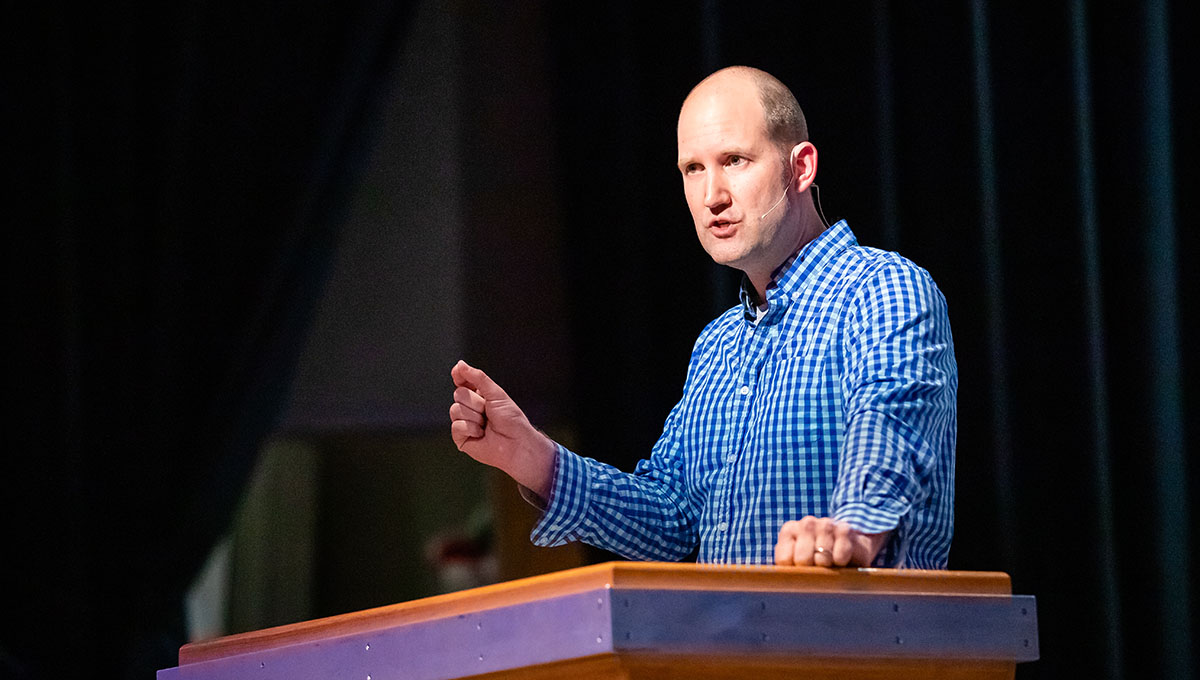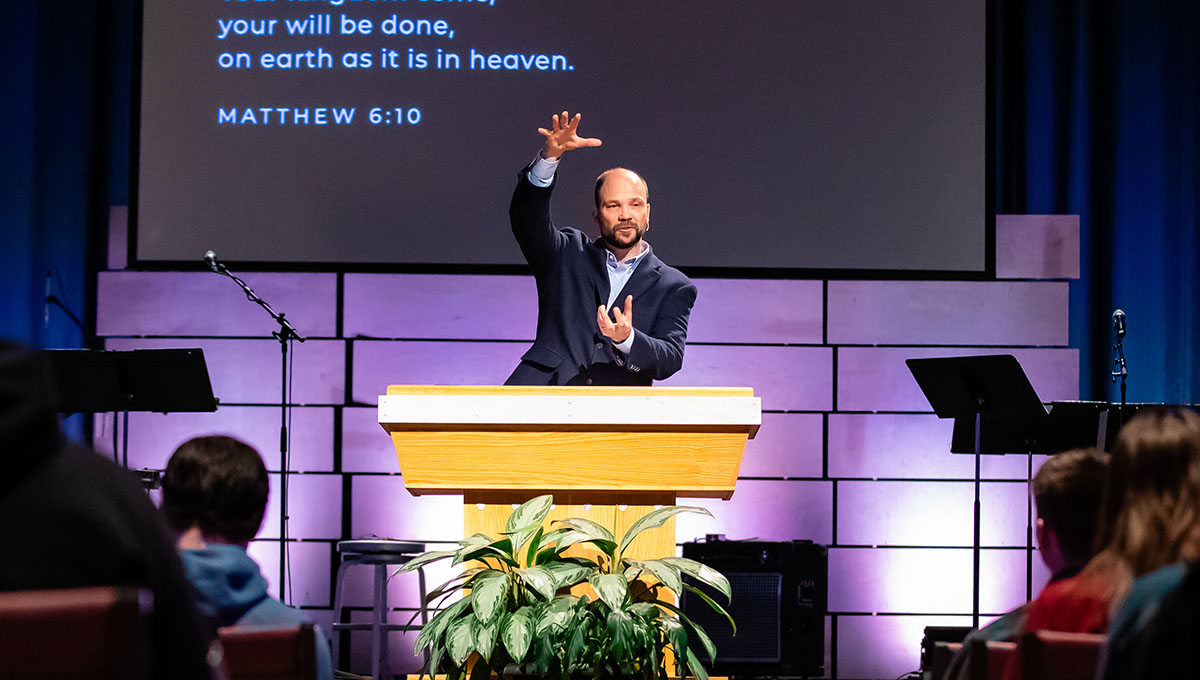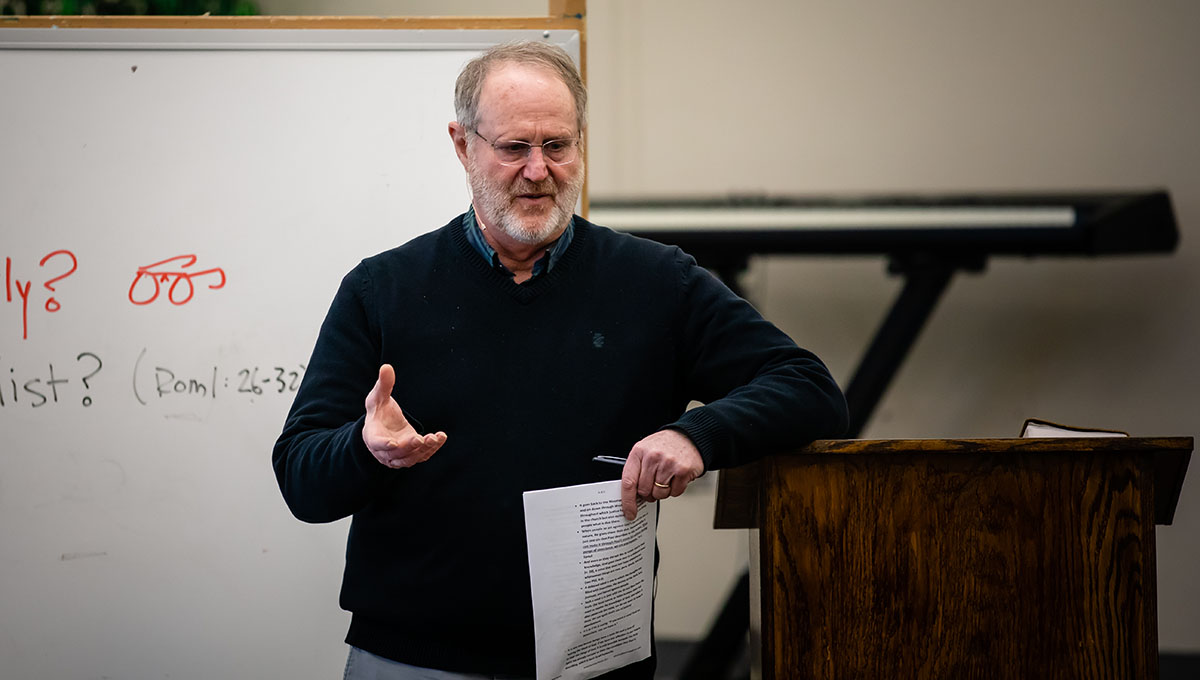The Wisdom of an Oxymoron
- Randy Karlberg

The amazing thing regarding oxymorons is that they do make sense even though they should not make sense. First, I want to make one thing perfectly clear. When I use the word “oxymoron” I am in no way referring to the breathing levels of that brother-in-law of yours! Even though he might be “amazing” in a different way, this blog is not about him. Now that I have gotten that out of the way, the definition of “oxymoron” from Webster’s is, “a combination of words that have opposite or very different meanings.” One example listed is the word “bittersweet.” As one word, bittersweet, has a meaning that is quite different from either of the base words. Webster’s also states that “an oxymoron and a moron have little in common except that both words come from the Greek word for “foolish” (moros).” Frankly I have a few thoughts on that statement, but enough time on your brother-in-law. So the question that I want to ask is, “how can an oxymoron make sense?”
Well, first of all the combining of two opposite words can have the effect of unveiling a much clearer and deeper meaning. The aforementioned word “bittersweet” is a good example. The word bittersweet shows that an event is indeed a sweet time, and yet it has challenging elements to it as well that make it difficult in the midst of a sweet time. One memory I have that is bittersweet is the last time I played golf with my Dad. He was 90 years old and not able to walk very well. My son, my brother, and I made a plan to get him out on the course one more time. It worked! We had a magical time enjoying this wonderful game together as three generations. As he putted in his last putt it was such an amazing experience hearing that little ball drop to the bottom of the cup. But it also was very emotional for the three of us knew that this would be his final putt ever! That was really hard to process. And yet I would not trade that time with those three men for anything.
Secondly, an oxymoron can bring one perspective to a particular group of people and have a different meaning to another group. Let’s go to Daniel 2 for an example. In Daniel 2 we are told that King Nebuchadnezzar had a dream. He didn’t really trust his “wise men” made up of Chaldeans, magicians, and sorcerers. Oh, and throw in a few Hebrews for good measure. So to prove that they were indeed “wise men” and that they were telling the king the truth, Nebuchadnezzar called them together and told them that they had to tell him the details of the dream that he had experienced and then give the meaning of the dream. They were “motivated” with the very real threat that if they did not tell the king his dream, they would be “torn limb from limb and their houses would be laid to ruin.” Obviously just as you have guessed, their response to the request was that no one could tell the king his dream. This was impossible! But the king was emphatic that they must tell him not only the meaning of the dream but the dream itself. Panic set in after they responded again with the impossibility of the request so King Nebuchadnezzar gave the order for this group of so-called “wise men” to be torn limb from limb.
When the guards came to take Daniel away as a member of this wise group, he responded with a question asking why he was about to have his appendages forcibly removed? He asked for a meeting with the king and was told the same message that the others were commanded. His response was quite striking. He agreed with the wise-guys, well sort of. Daniel 2:27-28, “Daniel answered the king and said, ‘No wise men, enchanters, magicians, or astrologers can show to the king the mystery that the king has asked. But there is a God in heaven who reveals mysteries, and He has made known to King Nebuchadnezzar what will be in the latter days. Your dream and the visions of your head as you lay in bed are these…”. He proceeded to tell the king the dream he had of a large statue made up from five different materials as well as a large stone. What God had revealed to Nebuchadnezzar is our oxymoronic term, Historical Prophecy. This dream revealed the next four empires that were to establish their reign in the world. Nebuchadnezzar’s kingdom was the golden head of the statue to be followed by the Medo-Persian, Greek, and Roman Empires. The final image, that of a stone, was explained in Daniel 2:44. “And in the days of those kings the God of heaven will set up a kingdom that shall never be destroyed, nor shall the kingdom be left to another people. It shall break in pieces all these kingdoms and bring them to an end, and it shall stand forever.” I hope you can see that this final kingdom that will never end is indeed the Kingdom of God when Jesus Christ returns.
This Historical Prophecy was not historical at all for the people it was originally told to. It was a current event. They were in the middle of the first kingdom. So for them this was a prophetic vision. As for us, most of this dream is a historic revelation. When the dream’s interpretation was revealed to King Nebuchadnezzar, it was over 600 years before the end of the Roman Empire. It was historic and prophetic for all of the people in between. This Historic Prophecy is an oxymoron, but it makes complete sense to those who put the work in to understand it. The fact that prophecy was stated over 600 years before it came true, and we can see how this prophecy was perfectly disclosed, should give us undeniable evidence that the Bible is indeed God’s Word. It should also show us that God is and always has been in control. For as Daniel himself said, not even the wisest sage can reveal these things but only the one true God in heaven. So rest in the fact that through what seems to be an unsettling quandary you can enjoy true peace because of our Heavenly Father and His true Word.










